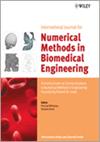Numerical studies of the influence of textural gradients on the local stress concentrations around fibers in carbon/carbon composites
引用次数: 6
Abstract
SUMMARY Carbon/carbon composites produced by chemical vapor infiltration consist of carbon fibers embedded in a matrix of pyrolytic carbon with anisotropic mechanical properties. The matrix around fibers consists of cylindrically shaped pyrolytic carbon layers of coating, which may have different textures with different mechanical properties in the axial, radial and circumferential directions. The goal of the present numerical study is to investigate the influence of the coating microstructure on stress concentrations and possible modes of failure in the carbon composite. Numerical modeling was performed on two length scales. First, the material properties of the differently textured pyrolytic carbon layers were determined on the nanometer scale using methodology based on the Eshelby theory for continuously distributed inclusions. Then, the obtained material parameters for each layer were used as input for the finite element models on the micrometer scale. The numerical simulations were conducted for three basic loading scenarios: uniaxial tension, shear loading and hydrostatic compression. The calculated stress distributions show zones of maximum stress concentrations and provide information on the possible failure regions for each material under all considered loading cases. The numerical results demonstrate good correspondence with experimentally identified failure regions. Copyright q 2008 John Wiley & Sons, Ltd.织构梯度对碳/碳复合材料纤维周围局部应力集中影响的数值研究
化学蒸汽渗透制备的碳/碳复合材料是将碳纤维包埋在具有各向异性力学性能的热解碳基体中。纤维周围的基体由圆柱状的涂层热解碳层组成,这些涂层在轴向、径向和周向上可能具有不同的织构和不同的力学性能。本数值研究的目的是研究涂层微观结构对碳复合材料应力集中和可能失效模式的影响。在两个长度尺度上进行了数值模拟。首先,采用基于连续分布夹杂物Eshelby理论的方法,在纳米尺度上对不同结构的热解碳层材料性能进行了测定。然后,将得到的各层材料参数作为微米尺度有限元模型的输入。对单轴拉伸、剪切加载和静压加载三种基本加载情况进行了数值模拟。计算的应力分布显示了最大应力集中区域,并提供了在所有考虑的加载情况下每种材料可能的破坏区域的信息。数值计算结果与实验识别的破坏区域吻合良好。版权所有2008年John Wiley & Sons有限公司
本文章由计算机程序翻译,如有差异,请以英文原文为准。
求助全文
约1分钟内获得全文
求助全文

 求助内容:
求助内容: 应助结果提醒方式:
应助结果提醒方式:


